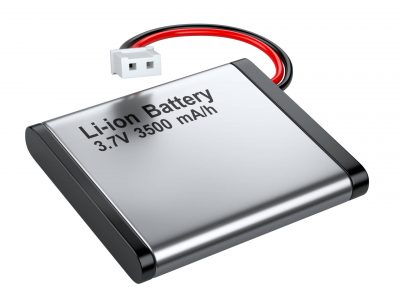Project Report For Lithium-Ion Battery Manufacturing Plant
Introduction
Project report for Lithium-Ion Battery Manufacturing Plant is as follows.
Lithium ions are a key component of the electrochemistry of the lithium-ion (Li-ion) battery, a cutting-edge battery technology. During a discharge cycle, lithium atoms in the anode are ionized and separated from their electrons.
The lithium ions move from the anode to the cathode via the electrolyte, where they reunite with their electrons and turn electrically neutral. The lithium ions are so small that they can flow through a barrier that divides the cathode from the anode, known as a micro-permeable barrier.
Due in part to lithium’s small size, which positions it third in the periodic table after hydrogen and helium, lithium-ion batteries are able to have a very high voltage and charge storage per unit mass and unit volume.
The electrodes of Li-ion batteries can be made of a variety of materials. Lithium cobalt oxide (cathode) and graphite (anode) are the most typical materials to be combined in portable electronic devices, including laptops and cell phones.
Other cathode components include lithium iron phosphate and lithium manganese oxide (used in electric and hybrid cars). Ether, a group of organic chemicals, is frequently used as the electrolyte in Li-ion batteries.

Market Potential Of Lithium Ion Battery Manufacturing Plant
The global lithium-ion battery market was assessed at USD 53.6 billion in 2020, with a growth at a cagr (CAGR) of 19.0 per cent expected from 2020 to 2028. cent projected from 2020 to 2028. Over the projection period, the market size is expected to grow due to a rise in the registration of electric vehicles and a drop in the price of lithium-ion batteries.
Over the forecast period, the growing number of solar installations and nuclear power plants, as well as the start of wind energy projects, are expected to boost market expansion. Expansion of off-grid installations in the United States, India, China, and Germany, as well as increased adoption of Li-ion batteries in medical equipment, are likely to boost the lithium-ion battery market throughout the forecast period.
The lithium-ion battery is utilised in electronic devices such as cellphones, power tools, and digital cameras. Hence, the need for the battery in the railway industries, industrial sectors, and solar power is projected to spike with the increased requirement for storage and power backup. Long-life duration, decrease in battery costs, and high density will boost the market for lithium-ion batteries throughout the projected period.
Growing demand for alternative types of batteries such as lithium-air, flow batteries, sodium nickel chloride, and lead-acid batteries in energy storage, consumer electronics, and electric cars are predicted to constrain the market during the estimated period.
Also, the tendency towards renewable energy for producing electricity was pushed by rising apprehensions connected to beneficial government incentives, climate change, dropping batteries cost, and the falling price of solar photovoltaic cells.
Project Report Sample On Lithium Ion Battery Manufacturing Plant
Need Help?
Create 100% Bankable Project Report
